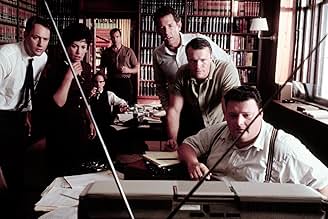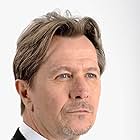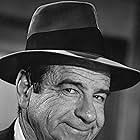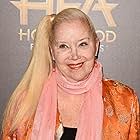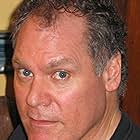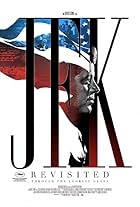New Orleans District Attorney Jim Garrison discovers there's more to the Kennedy assassination than the official story.New Orleans District Attorney Jim Garrison discovers there's more to the Kennedy assassination than the official story.New Orleans District Attorney Jim Garrison discovers there's more to the Kennedy assassination than the official story.
- Won 2 Oscars
- 19 wins & 41 nominations total
- Jackie Kennedy - Double
- (as Jodi Farber)
- Plaza Witness #1
- (as E. J. Morris)
Storyline
Did you know
- GoofsDavid Ferrie's "confession" in Fountainbleu Hotel never happened. Ferrie went to his death denying any knowledge of Oswald or the plot to kill JFK.
- Quotes
Jim Garrison: The Warren Commission thought they had an open-and-shut case. Three bullets, one assassin. But two unpredictable things happened that day that made it virtually impossible. One, the eight-millimeter home movie taken by Abraham Zapruder while standing by the grassy knoll. Two, the third wounded man, James Tague, who was knicked by a fragment, standing near the triple underpass. The time frame, five point six seconds, determined by the Zapruder film, left no possibility of a fourth shot. So the shot or fragment that left a superficial wound on Tague's cheek had to come from the three shots fired from the sixth floor depository. That leaves just two bullets. And we know one of them was the fatal head shot that killed Kennedy. So now a single bullet remains. A single bullet now has to account for the remaining seven wounds in Kennedy and Connelly. But rather than admit to a conspiracy or investigate further, the Warren Commission chose to endorse the theory put forth by an ambitious junior counselor, Arlen Spector, one of the grossest lies ever forced on the American people. We've come to know it as the "Magic Bullet Theory." This single-bullet explanation is the foundation of the Warren Commission's claim of a lone assassin. Once you conclude the magic bullet could not create all seven of those wounds, you'd have to conclude that there was a fourth shot and a second rifle. And if there was a second rifleman, then by definition, there had to be a conspiracy.
- Crazy creditsClosing statement: What Is Past Is Prologue
- Alternate versionsA director's cut prepared by Oliver Stone for the video release features 17 minutes of footage not included in the theatrical version. Among the new material:
- Guy Bannister and his secretary talk briefly about Oswald and laugh.
- New flashbacks of Oswald's life in Dallas with his wife after his return from Russia and his contacts with George De Mohrenshildt, Janet and Bill Williams (the man who gets Oswald a job at the book depository).
- When Garrison and his assistant are at the book depository, they discuss the fact that the motorcade route was changed by then Dallas mayor Earle Cabell, brother of general Charles Cabell fired by Kennedy in 1961.
- A fake Oswald (Frank Whaley) is seen in a flashback test-driving a new car and talking about Russia to the salesman.
- In another flashback, Oswald is introduced to the New Orleans Cuban community and meets Sylvia Odio, leader of an underground anti-Castro movement.
- A new flashback of Oswald and Clay Shaw seen together at a voter's registration drive in September '63.
- Jim Garrison appears on "The Jerry Johnson Show" on TV to be interviewed. He tries to show photographs and defend his theories but he's cut short by host Jerry Johnson (John Larroquette).
- Bill Broussard meets Jim Garrison at the airport where he's leaving for Phoenix, AZ and tells him the mob will attempt to assassinate him. After a few minutes he has to flee from a public restroom when he hears strange voices in the next stall and is approached by an unknown man (a cameo by production designer Victor Kempster) who pretends to be a friend of him.
- Garrison and his staff discover that Broussard has disappeared from his apartment, and argue about the real reason why Clay Shaw has been brought to trial. While they're talking, Garrison sees Robert Kennedy on TV and says "They'll kill him before they'll let him be president".
- During the trial, more witnesses against Shaw are shown than in the theatrical version, including a obviously insane man (Ron Rifkin) who claims that Shaw discussed killing Kennedy with him.
- ConnectionsEdited into Malcolm X (1992)
- SoundtracksDrummers' Salute
Arranged by D. G. McCroskie
Performed by The Royal Scots Dragoon Guards
Courtesy of Fiesta Records Co. Inc.
Ultimately, it does not matter whether JFK's conclusion is correct, and I am even willing to give a little more license than I normally would to more-substantive, as well as less-important, inaccuracies, although I have my limits here too. But this movie's significance is just that it was made. For although other films had chronicled the events surrounding the assassination, none had in any substantial way sought to discredit the Warren Commission, as was so absolutely merited.
Regardless of your opinion on what really happened, it is my view that everyone should be critical of the media, which were so obsequious to the Warren Commission. The New York Times from the start referred to Oswald as the "assassin," not the "suspect." Life Magazine altered photos strongly suggesting a shot had been fired from the grassy knoll. Many years later, when being interviewed by Dan Rather about his film, Oliver Stone said to his face, referring to the event: "Where were you, Dan?"
Indeed, in a documentary he made, Rather said, "in the absence of any CREDIBLE evidence, we can only..." This fallacy is a betrayal of the legal definition of evidence, with Rather's poor characterization of the word "credible." There is enormous, indeed endless, evidence contradicting the Warren Commission's view, and much of it is certainly credible, including all the evidence of the Commission's own efforts to conduct a dishonest and incomplete investigation and intimidate witnesses into changing their testimony to support the version it wanted. In fact, I consider it Gerald Ford's greatest character flaw that he served on it and backed its conduct and conclusion, a far more disturbing matter than his pardon of Nixon. Whether the evidence to which Rather referred is CONCLUSIVE is another story; that is up to us, the jury. The sort of smugness Rather shows has been characteristic of much of the media, and I do not know all the reasons they behaved as they did. Thus, we needed a more courageous, enterprising person like Oliver Stone to step in and fill the gap -- the overwhelming majority of people believe the Commission got it wrong.
Stone's enlistment of mere hypotheticals, theorized by Garrison (setting aside the final scene--there were moments before) or whoever, has been subjected to unfair, ill-conceived criticism. Most people who knew anything at all about the assassination believed there were problems with the Commission's version before they saw this film, and came out of it with an elaboration and hypothesis, not a mindbender. Even if we concede that some younger viewers knew little about the assassination, the notion of the critics of "JFK" that the film would automatically program their minds is an insult to their intelligence, of the ability of people in general to think and come to their own conclusions. Indeed, no one to whom I have EVER spoken has betrayed a view of events that reflects even most, if not all, of Stone's conclusions. If any programming is called for, it is to program people against the Commission's version, not, as its defenders would wish, against Stone. For no one can be programmed to accept Stone's alternate view.
OK, some inaccuracies of Stone can be criticized, such as his portrayal of Garrison (All-American Kevin Costner, natch) as a wholesome hero, and the time-between-shots issue (it is now generally conceded that there was enough time, based on all the evidence, for Oswald to have done it, for those who believe he did). Perhaps the speech by David Ferrie never occurred, but it still reflects the widely held view that the CIA and Mafia worked together in this matter. Certainly, many people in the government despised Kennedy, and there were substantially more elements of this hostility than portrayed in the film. Anyway, we can go on and on. The Warren Commission tried to cover up overwhelming evidence that Ruby knew Oswald, that a shot was fired from the grassy knoll, that a dark-skinned man fired shots from the Dallas School Book Depository, and that Officer Tippit was killed by someone other than Oswald (actually, two people). Well, at least some members resisted the single bullet theory (I guess that passes Rather's definition of "credible"), although they ultimately signed the report.
I do not agree with Oliver Stone's specific ultimate conclusion about the central moving force of the assassination. But he has the right to suggest the U.S. government was involved, and many, including myself, think it was involved somehow, but that what is debatable is merely to what extent and how far up. Hats off to Stone for his courage and thoughtfulness in making his necessary statement.
9 out of 10
- Cineleyenda
- Nov 3, 2001
- Permalink
Details
Box office
- Budget
- $40,000,000 (estimated)
- Gross US & Canada
- $70,405,498
- Opening weekend US & Canada
- $5,223,658
- Dec 22, 1991
- Gross worldwide
- $205,405,498
- Runtime3 hours 9 minutes
- Color
- Sound mix
- Aspect ratio
- 2.39 : 1
Contribute to this page










